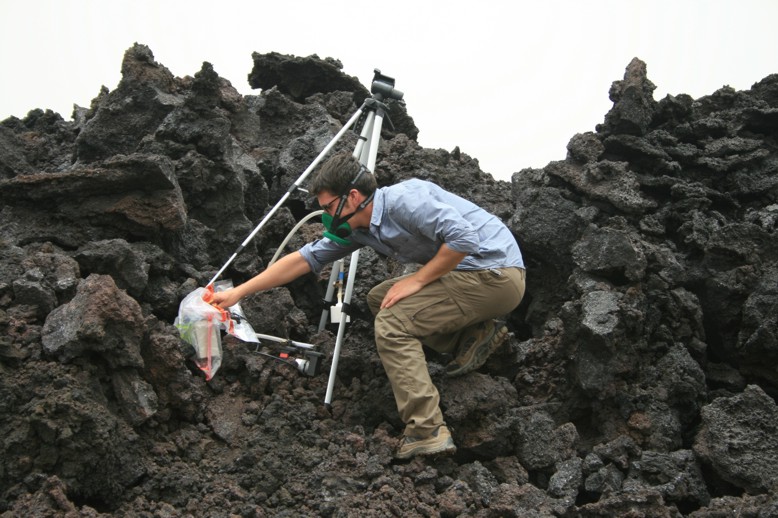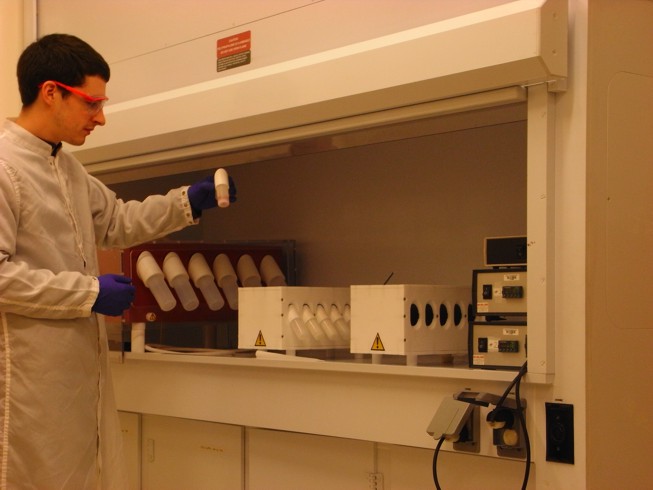
Dave Ferguson (Oxford) collects samples from freshly erupted lava. He is wearing a gas mask to protect him from the poisonous gases released during the eruption. Photograph by Talfan Barnie, University of Cambridge.
Chasing eruptions with volcanology
How do volcanologists find out if a volcano erupts in the desert when no one is around to see it? By using satellites. Volcanic eruptions produce lots of very hot material that generates infrared light. This light is detected by satellites and information on the latitude and longitude of the source is sent out to volcanologists across the globe.
Volcanologists visit the site of the eruption to collect rock samples. In the Afar Depression, the volcanoes are difficult to access and can only be reached by 4x4, trekking with camels or by helicopter. It can also be dangerous as volcanic gasses can poison and asphyxiate, the lava may be at temperatures of several hundred degrees and there is the risk of being caught in explosions and flying debris. Thermal cameras are used to assess the temperature of the lava flow.

Dave Ferguson analysing samples back in the lab
Once the samples have been collected they are taken back to the laboratory for analysis. This is a complicated process that can take many months. The chemical composition of the erupted lava tells us about the depth of the magma chamber below the surface and how it is changing, and may also give hints about future activity.
